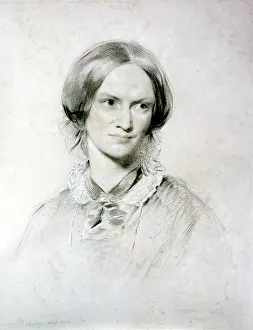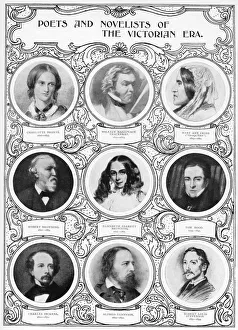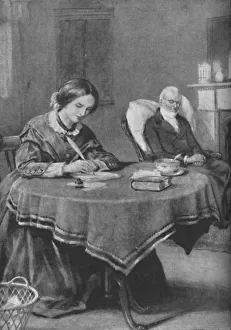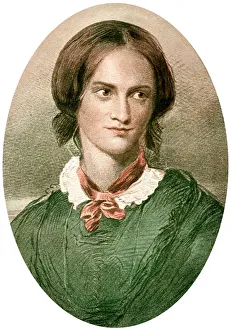Currer Bell Collection
Currer Bell, the pseudonym used by Charlotte Bronte, remains an iconic figure in English literature
All Professionally Made to Order for Quick Shipping
Currer Bell, the pseudonym used by Charlotte Bronte, remains an iconic figure in English literature. Born in 1816 and passing away at a young age of 38 in 1855, she left behind a remarkable legacy as one of the most celebrated novelists of her time. This captivating portrait from 1850, beautifully captured by artist George Richmond, showcases her profound intellect and inner strength. Engraved by James Charles Armytage around the same period, this image immortalizes Bronte's enigmatic persona that continues to intrigue readers even today. As part of the Poets and Novelists of the Victorian Era collection from the late 19th century, it is evident that her literary prowess had already made a lasting impact on society during her lifetime. The serene Oakwell Hall near Bristol served as inspiration for Field Head in Shirley - one of Bronte's lesser-known works published in the 1860s. The unknown creator perfectly captures its tranquil beauty through their lens or brushstroke. Another artwork titled "The Visit to the Mad Woman After The Interrupted Marriage" depicts a scene reminiscent of Jane Eyre - arguably Bronte's most famous novel. Created by Fred Walker around c1870 (1942), it conveys both mystery and intensity while delving into themes close to Bronte's heart. In another masterpiece also crafted by Fred Walker circa c1870 (c1950), we witness a dramatic scene from Jane Eyre come alive before our eyes. Its vivid portrayal transports us into Bronte's world where love triumphs over adversity against all odds. "The Brontes - Words Inspired By Hope That Won Renown, " created around c1925, pays homage to Charlotte alongside her talented sisters Emily and Anne. Together they defied societal norms with their groundbreaking works that continue to captivate audiences worldwide. Even years after her untimely demise, cigarette cards featuring Charlotte Bronte were produced in 1935, commemorating her literary achievements.












